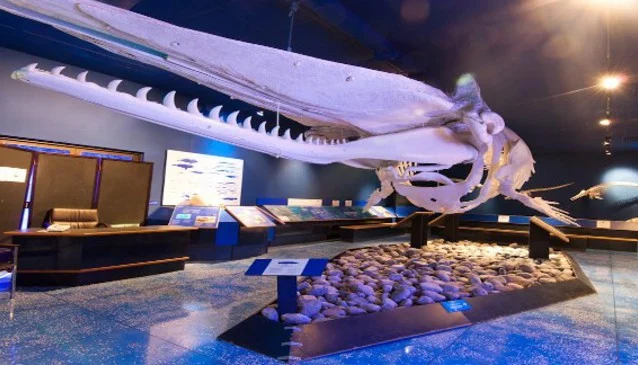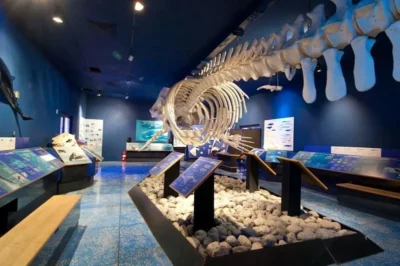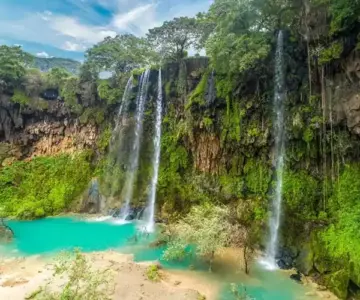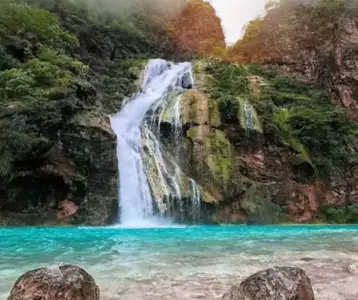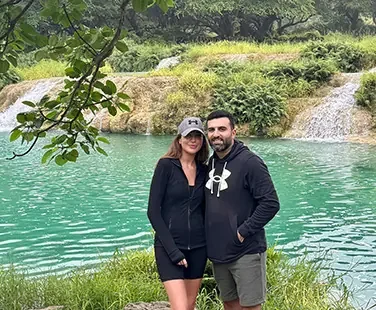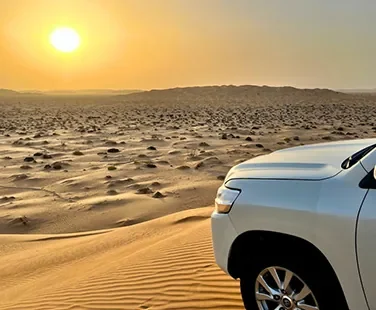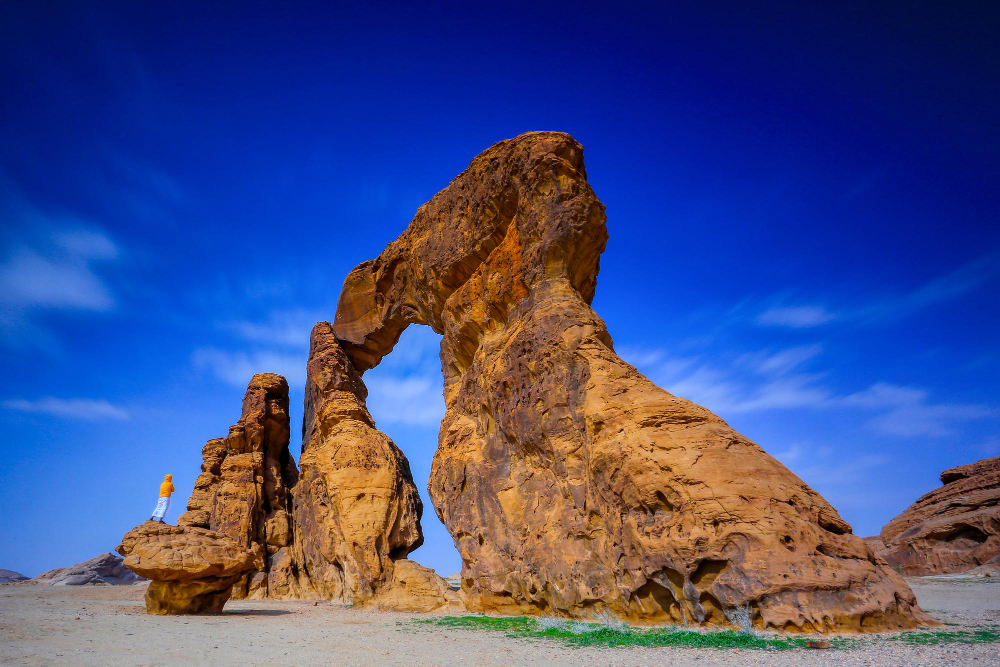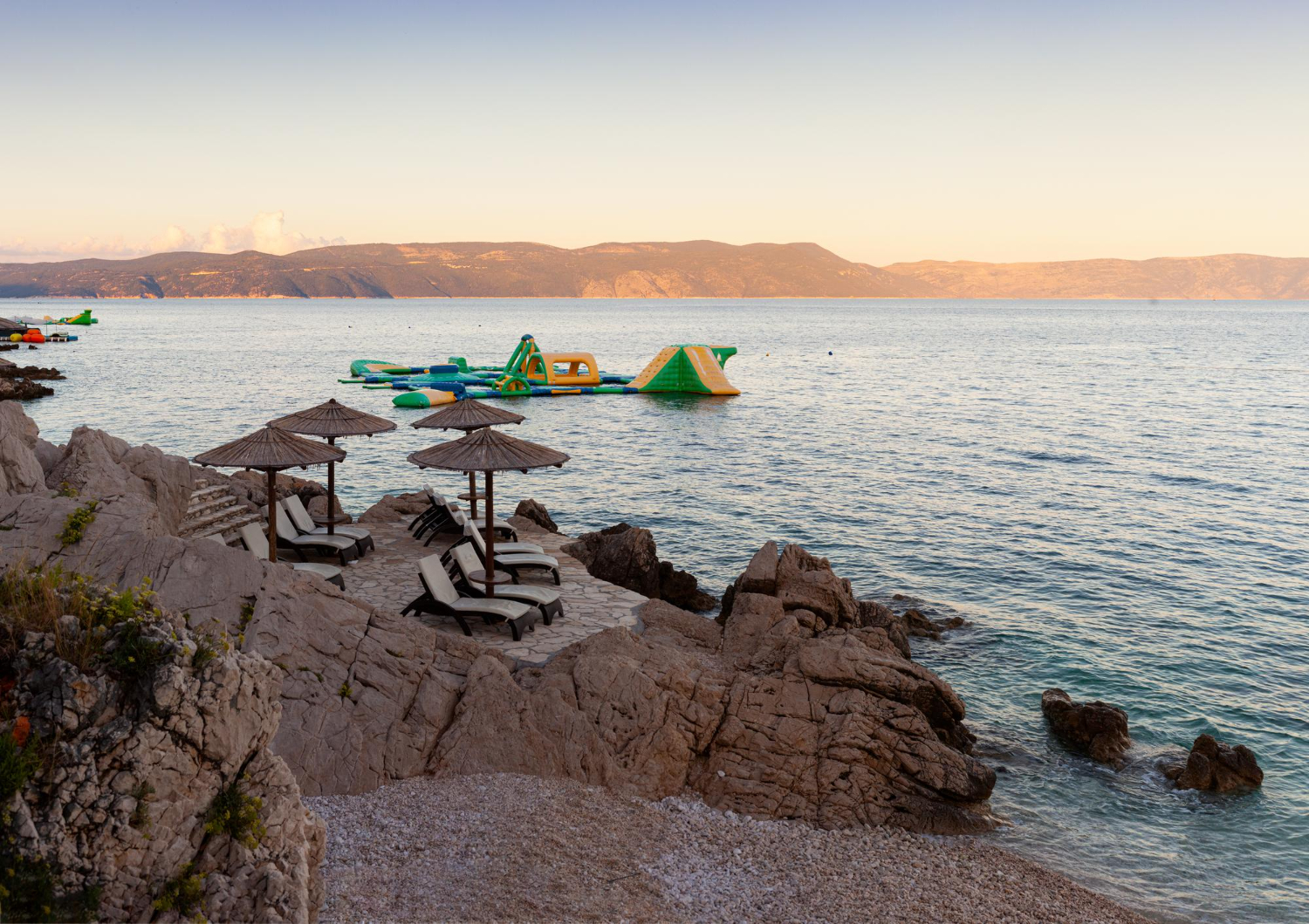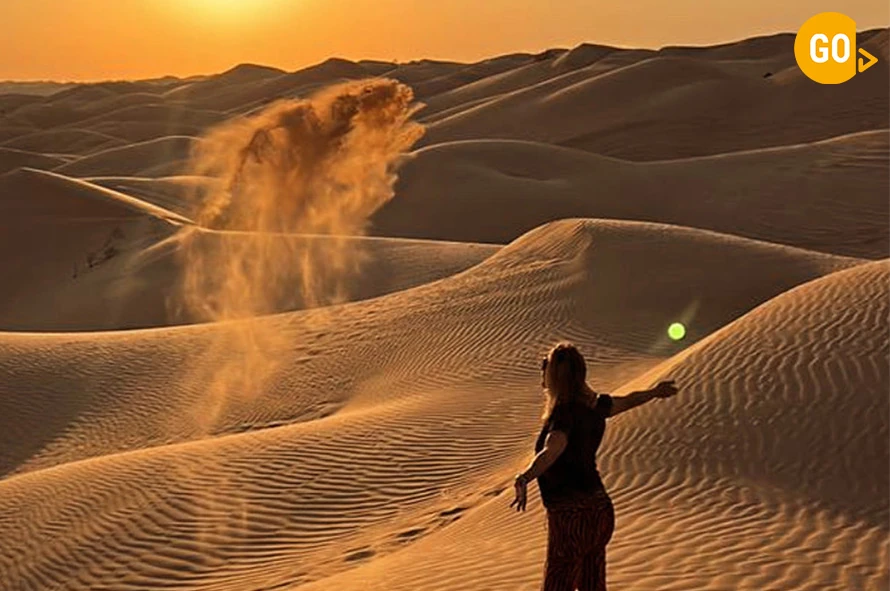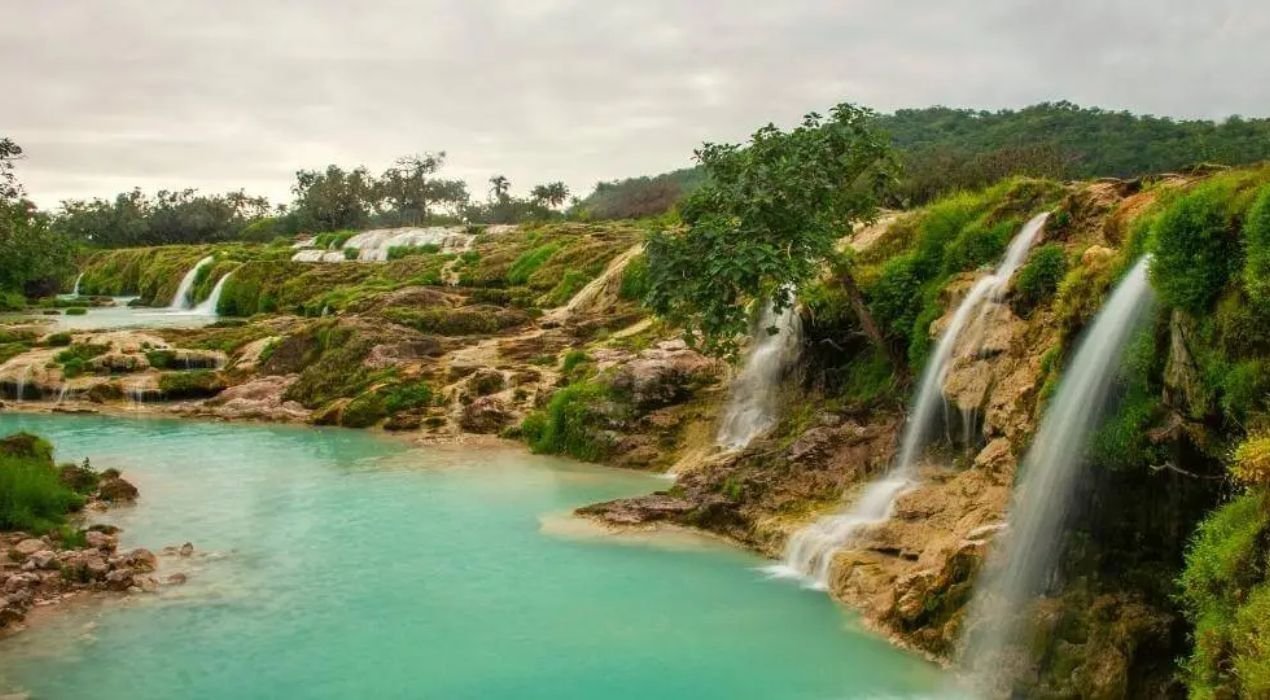My first encounter with the 65-foot sperm whale skeleton at the Natural History Museum Muscat left me speechless. This remarkable place showcases Oman’s natural treasures, from unique geological specimens to captivating wildlife exhibits.
The Natural History Museum Muscat stands out among all museums we’ve visited in Oman. It’s clear proof of the country’s rich biodiversity and geological heritage. The museum brings Oman’s natural world to life through interactive displays and complete collections. Visitors can trace the journey from ancient geological formations to modern ecosystems.
Let me share everything you need to know about this cultural landmark in this piece. You’ll discover the most intriguing exhibits and educational programs. The practical visiting tips I’ve included will help you get the most out of your time here.
A Journey Through Oman’s Natural Heritage
The Natural History Museum Muscat welcomes visitors through its doors since December 20, 1985. This institution stands proudly in the Ministry of Heritage and Culture complex in Al Khuwair and represents Oman’s steadfast dedication to preserving its natural heritage.
History and significance of the museum
The museum’s growth from humble beginnings to one of Oman’s leading scientific institutions tells an inspiring story. Its rare collections captivate visitors with extraordinary natural specimens from across the region. A 260-million-year-old fossilized tree from the Al-Haqf region and ancient coral remains dating back 270 million years from Wadi Al-Sahtan stand as remarkable examples of these treasures.
Overview of museum sections
The natural history museum muscat oman features specialized sections that highlight the country’s rich natural heritage:
- Marine Environment Hall – featuring coastal ecosystems and geological history of Oman’s seas
- Wildlife Exhibition – displaying indigenous mammals, insects, and birds
- Geological Treasures – showcasing rock formations and mineral specimens
- Botanical Gardens – presenting local flora and vegetation
- Research and Archives – housing scientific records and study materials
Cultural importance to Oman
This museum serves as more than a display space – it stands as a vital center for learning and research. Scientific teams, universities, and research institutions benefit greatly from its resources. The museum’s well-equipped learning centers and specialized workshops make it special, helping preserve and promote Oman’s natural heritage for future generations.
Vision 2040, the country’s ambitious development plan, recognizes the museum’s value to Oman’s cultural landscape. The museum fits into a broader strategy that creates vibrant, forward-looking cultural institutions to benefit both the economy and citizens’ wellbeing. Its complete exhibits and educational programs share knowledge about Oman’s natural wonders with local and international visitors alike.
Fascinating Exhibits and Collections
The grand halls of the Natural History Museum Muscat welcome visitors with remarkable collections that tell Oman’s natural world story. Let’s take a closer look at the exhibits that make this museum special.
The iconic sperm whale skeleton
A magnificent sperm whale skeleton in the Whale Hall stands as the museum’s centerpiece. Scientists found this 14-meter-long giant stranded at Barka, about 60 kilometers northwest of Muscat, in September 1986. The skeleton weighs 3.5 tons, and the living whale would have weighed around 35 tons! This almost complete original skeleton remains intact, though wooden replacements stand in for teeth and digits, while plaster recreates the cartilage.
Indigenous wildlife displays
The wildlife section brings visitors face-to-face with Oman’s rich fauna. The exhibits showcase some of the country’s most remarkable species:
- The rare Arabian Leopard
- Indigenous mammals and birds
- Native insects and reptiles
- Marine life specimens
- The threatened Tahr
These displays are unique because they let us see species that rarely appear in the wild, especially endangered ones. Each exhibit creates a window into these creatures’ natural habitats.
Geological and botanical treasures
The museum’s floors reveal an impressive collection of geological wonders. The first floor features detailed exhibitions of marine environments, from sandy coasts to mangrove ecosystems. The coral reef displays and Oman’s seas geological history create a fascinating narrative.
Wild environments take center stage on the second floor, with exhibits of valleys, caves, and water springs. The botanical section presents a complete look at Oman’s varied flora, showing the country’s rich plant life through carefully preserved specimens.
The exhibits shine in their simplicity. Complex geological concepts become easy to grasp, and the museum makes natural history both engaging and educational for everyone who visits.
Interactive Learning Experiences
The Natural History Museum Muscat gives visitors an amazing learning experience. You’ll find plenty of ways to learn through interaction. Since 2010, the museum has grown into an educational powerhouse that welcomes visitors of all ages, thanks to its work with the Smithsonian Institution.
Educational programs and workshops
The museum’s educational setup impresses us with its depth. Staff members learned from Smithsonian education specialists through specialized workshops in Oman and Washington, D.C. These experts now run programs that bring Oman’s natural heritage alive. We love how these workshops mix old-school teaching with modern methods to help everyone understand complex topics.
Child-friendly exhibits
Kids really bring this museum to life. We spent hours watching children get excited as they tried different hands-on activities. The museum has:
- Interactive buttons and displays that bring exhibits to life
- A dedicated play area with toy houses and kitchen sets for toddlers
- Hands-on experiments suitable for different age groups
- Games that teach concepts like electrolysis and probability
- Educational activities that make learning fun and memorable
Scientific demonstrations
The Scanning Electron Microscope (SEM) Lab stands out as the highlight of our visit. We joined museum scientists who showed us this amazing tool’s power to explore our natural world. They showed us butterfly wings in incredible detail – something you can only see through electron microscopy.
These demonstrations feel special because you get to talk directly with experts. The staff explains complex scientific ideas and tells fascinating stories about the exhibits. They take time to answer questions and guide visitors through experiments. Everyone leaves with a better understanding of Oman’s natural heritage.
Regular visits to the museum always teach you something new. Each exhibit encourages exploration while teaching valuable lessons. Dynamic presentations break down complex scientific concepts into bite-sized pieces. This place sparks curiosity in both kids and adult science lovers alike.
Planning Your Visit
Here are our insider tips from several visits to the Natural History Museum Muscat at different times of the year. Let’s take a closer look at what you should know to make your museum visit perfect.

Best times to visit
The Natural History Museum Muscat is most enjoyable during the cooler months from December to March. The weather makes walking between different sections much more pleasant. Your best bet is to arrive right as the museum opens at 8:00 AM. This way, you’ll have enough time to see everything before closing time at 1:00 PM.
Weekday mornings tend to be quiet, which gives you more space to enjoy the exhibits. The peaceful atmosphere also makes it a great time to join educational programs and chat with the museum staff.
Ticket information and guided tours
The museum’s ticket prices vary based on visitor categories:
| Visitor Category | Price (OMR) | Requirements |
|---|---|---|
| Citizens & GCC Nationals | 1.000 | Valid ID required |
| Residents | 2.000 | Resident Card needed |
| Tourists | 5.000 | ID required |
Make sure to bring your ID documents since you’ll need them to buy tickets. International visitors will find it easy to pay with their Visa or Master cards.
The guided tours are a great way to get more from your visit. Our guides gave an explanation of exhibits that helped us learn things we might have missed on our own. They tell fascinating stories about the specimens and artifacts mentioned in earlier sections.
Photography and facility guidelines
Our visits taught us some helpful tips that make the experience better for everyone:
- Photography is allowed throughout the museum, but keep in mind:
- No flash photography near sensitive specimens
- Stay at a safe distance from displays
- Consider other visitors while taking photos
- Ask staff about photography rules for special exhibitions
Bring your camera to capture amazing displays like the sperm whale skeleton and geological specimens we talked about earlier. Most exhibition areas have great lighting for photos, but morning light through the museum’s windows works best.
Comfortable shoes are essential since you’ll walk through several exhibit levels. A light jacket comes in handy too, as the museum keeps temperatures low to protect the specimens.
Nearby Attractions and Activities
Our recent visit to the Natural History Museum Muscat was amazing, and we found that there was so much more to see in the surrounding area. Here are our favorite ways to make your visit to this vibrant neighborhood memorable.
Combined itinerary suggestions
The museum’s location in Al Khuwair makes it easy to visit other nearby attractions. We’ve put together a list of must-visit spots you can reach quickly:
- Cultural Sites
- Mohammed Al Ameen Mosque – Perfect for architectural photography
- Bait Adam Museum – Complements your cultural experience
- Sultan Qaboos Sports Complex – Impressive modern architecture
- Natural Spaces
- Qurum Natural Park – Ideal for afternoon walks
- Ghubrah Beach – Perfect for sunset views
- Shati Al Qurum Beach – Great for family picnics
Local dining options
The food scene near the museum is incredible. The area has an impressive range of restaurants that we’ve tried ourselves:
| Restaurant | Cuisine Type | Our Recommendation |
|---|---|---|
| Bait Al Luban | Traditional Omani | Try the excellent shuwa |
| Takara | Japanese | Modern fusion experience |
| Trader Vics | French Polynesian | Famous for Crispy Duck |
| Le Petit Belge | Belgian | Unique hop culture |
The blend of traditional and modern restaurants makes this area special. Bin Ateeq stands out as our top pick to experience authentic Omani food while sitting on the floor in true local style.
Transportation tips
Getting around needs some planning. Here are our tested transportation tips:
Rental Car Option A rental car is the most convenient choice, with prices ranging from 40-100 USD per day. The museum area has well-maintained roads and clear English signs. You’ll love the freedom to explore other attractions at your own pace.
Taxi Services Taxis are easy to find but can be expensive. They work well for short trips, especially if you don’t want to drive. Remember to agree on the fare before you start.
Public Transportation Public transport is limited in this area. The new bus route isn’t very practical for tourists because it runs infrequently. A rental car or taxi is your best bet if you plan to visit multiple places.
Start your day early at the museum, then head to Qurum Natural Park or Ghubrah Beach in the afternoon. This schedule helps you avoid the heat and makes the most of your time in this fascinating part of Muscat.
Conclusion
The Natural History Museum Muscat shows proof of Oman’s natural wonders and goes beyond typical museum displays. Our extensive research has helped us find an institution that brilliantly combines education, entertainment, and scientific discovery.
The museum brings Oman’s natural heritage to life in impressive ways. A massive sperm whale skeleton dominates the space. Rare geological specimens tell stories that span millions of years. The museum’s interactive exhibits and educational programs make scientific concepts available to everyone. Its prime location makes it perfect to start your exploration of Muscat’s cultural world.
Nature lovers, families looking for educational activities, and curious travelers will enjoy this trip through Oman’s natural world. The museum showcases the best of Oman’s natural and cultural heritage. You should plan your visit during cooler months and join the guided tours. Take time to check out nearby attractions too – it’s worth the extra effort.

